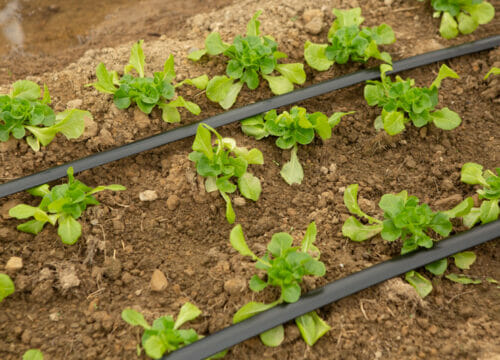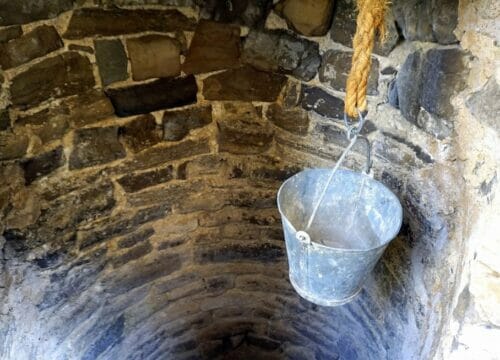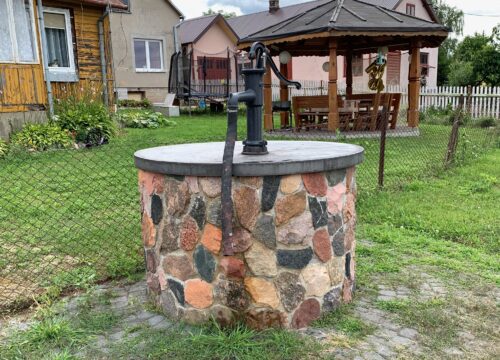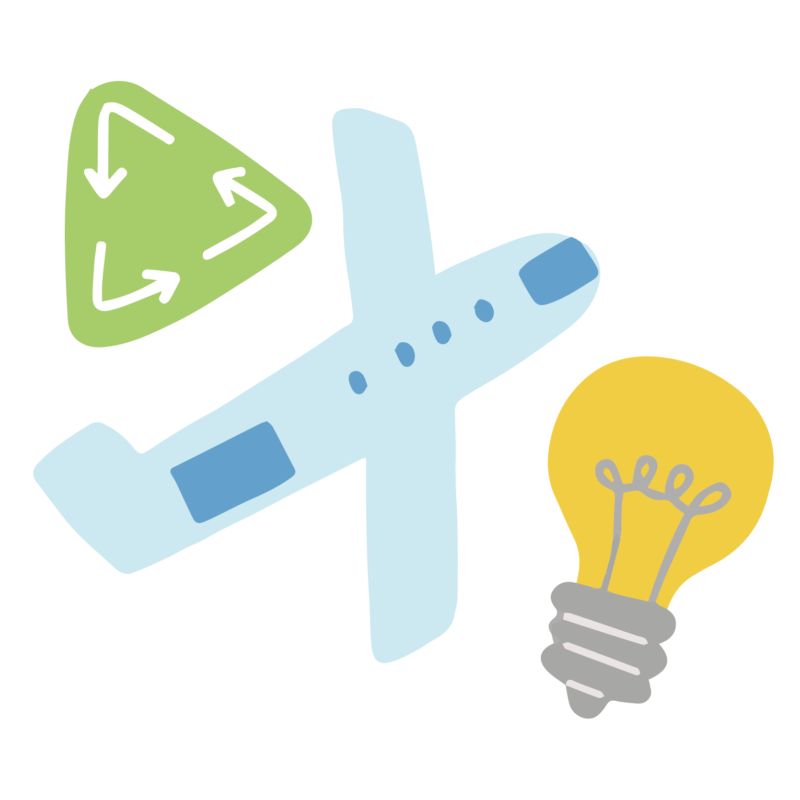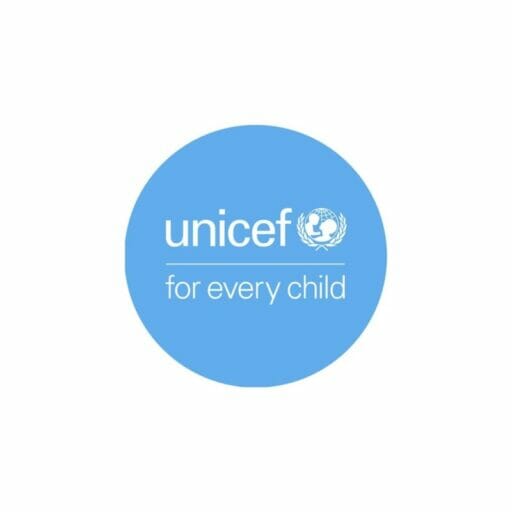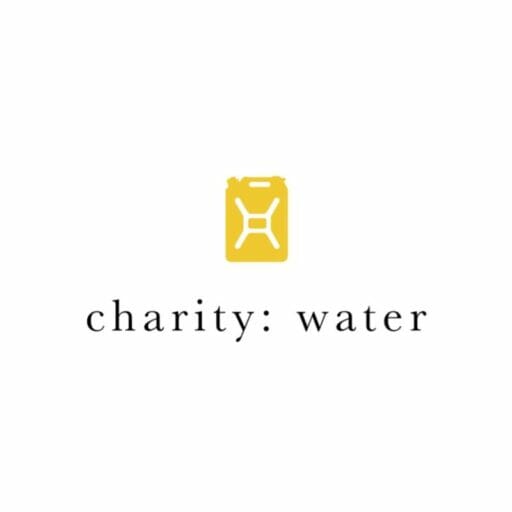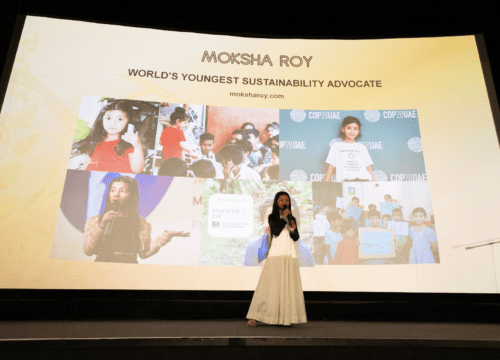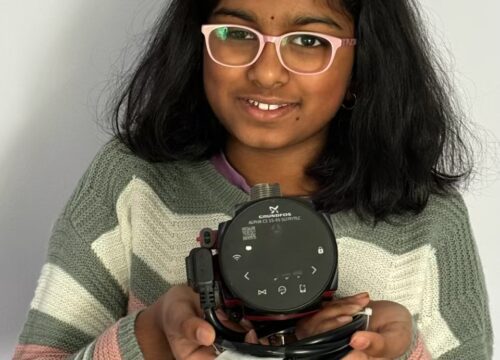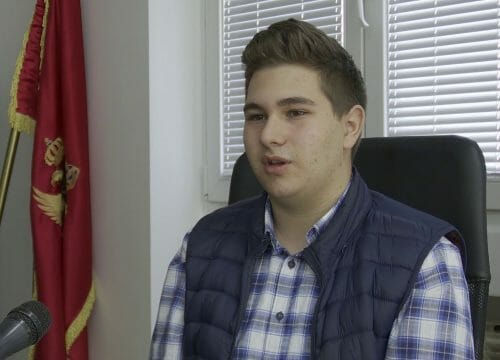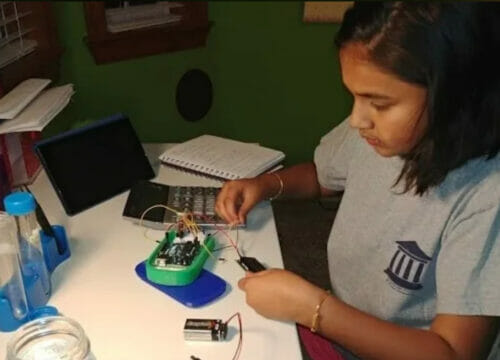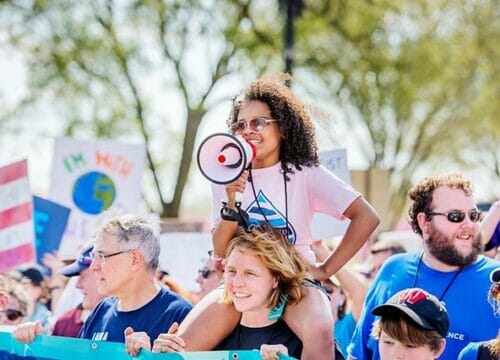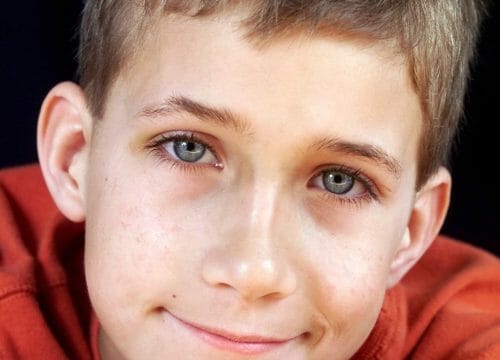UNICEF works to build a better world for every child, every day, everywhere.
Clean Water
and Sanitation
Access to clean water for everyone

1. THE PROBLEM
What do we need water for?
You might think ‘Well, I only drink a few litres a day’ but your actual water use is so much more. Think about the first things you did this morning. Maybe you went to the loo, brushed your teeth and ate breakfast. All of these activities involve water.
In fact, most people use at least 3,000 litres per day.
The trouble is that lots of people can’t access enough water or only have access to dirty water which makes them sick.

2. The Solution
So what can we do to help?
We need to use water more efficiently, build wells and other infrastructure to bring water to communities that need it and design technology to clean dirty water so that it is safe to use.

3. Take Action
There are lots of ways that anyone, including you, can make a difference to make sure everyone has enough clean water. For example, you could: limit your personal water consumption or raise money for a charity that builds wells.
Everyone can take action to make real change. What will you do?


4. CHARITIES
There are lots of charities that need your help to bring clean water and sanitation to everyone around the world.
For example, WaterAid and Charity:Water provide clean water and toilets to communities around the world.
See how you can support them in their amazing work.
What would you do if you woke up one morning, opened the tap and no water came out? You would probably be able to make do for a couple of hours but if the situation continued for longer than a day, you may have a problem!
What would you need water for? When you start thinking about it, you’ll soon realise that you need water for many things besides drinking.
You and your family need water to:
- drink
- cook food
- clean dishes
- clean the house
- wash clothes
- bathe and shower
- brush teeth
- flush the toilet.
You might think: ‘It’s easy, we’ll just go buy water’. But how much water would you need to buy?
So, to come back to your water crisis – you can now see how there is no way your family is going to buy all that water every day!
The incredible thing is, you use way more water than this every day. There is virtual water in every product you use and in every bite of food you eat. This is ‘hidden’ water that you don’t see. It takes massive amounts of water to grow food and make things in factories so it’s easy to not realise how much water goes into these things. You’ll be surprised but the virtual water that is used to grow your food on a farm is way more than the actual water you use from the tap in your house.You will remember from earlier that every person uses 300 – 400 litres of water every day. Well, that’s only what you use directly from a tap. When you add virtual water, the real number is much higher. It varies depending on how you live but every person uses about 3,000 – 6,000 litres of water every single day.
Take a Guess
The problem
2,400,000,000
PEOPLE DON’T HAVE ACCESS TO BASIC SERVICES SUCH AS TOILETS
1,800,000,000
PEOPLE DRINK WATER THAT IS CONTAMINATED BY WATER
3,500,000
PEOPLE DIED FROM WATER-RELATED DISEASES IN 2020
The World Faces Two Big Water Problems:
1. Water Scarcity
Water scarcity is when there is not enough water.
Water scarcity happens because of natural causes such as a drought, or human causes, such as over-consumption.
A shocking 40% of the world’s population – so almost half the people in the world – are affected by water scarcity.
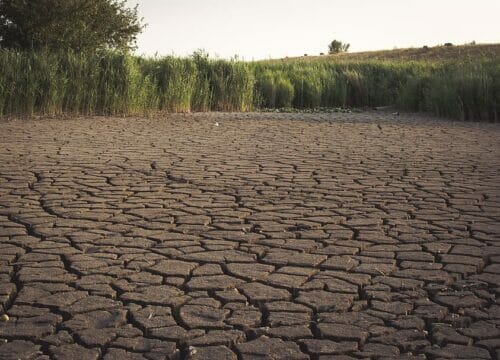
2. Water QUALITY
Water quality is whether or not the water is clean and healthy.
All around the world, water quality is worsening because of the increase in pollutants. Examples of pollutants include:
- rubbish from households (for example plastic packaging)
- chemicals from households (for example medicines and makeup) and factories
- sewage from households
- pesticides and insecticides from fields
More than 80% of human wastewater is released directly into rivers and seas. This water often contains dangerous chemicals that we don’t even think about.
People without access to enough clean water can’t do basic things – like drinking, cooking, washing and going to the toilet.
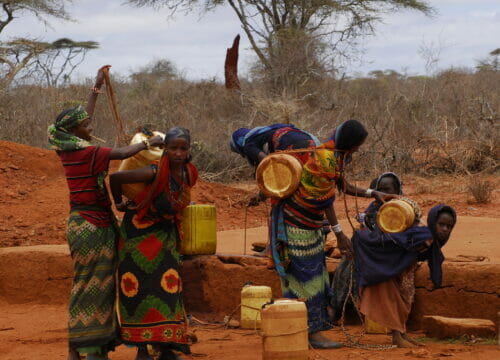
Using dirty water is very dangerous and can make people sick. Quite a few diseases are spread through dirty water – like cholera, diarrhoea, dysentery, hepatitis A, typhoid and polio.
In some countries, people must travel very far to get water. Usually, the women and children fetch water while the men are at work. These women and children may spend up to 8 hours per day walking. This means they don’t have as much opportunity to do other things – such as going to school or earning an income.
A Day In The Life Of Aysha
Watch to see what a day in the life of a 13-year-old girl living in Ethiopia looks like. Think about the similarities and differences to a day in your life.
Water Scarcity and Quality Around the world
Water scarcity and quality depend on where you live. Some countries are water-scarce, some have poor water quality and others have problems with both.
In the last 100 years, dirty water and poor sanitation have led to more deaths than any other cause. Scientists, politicians and the media have usually focused on the water crisis in parts of the world that aren’t developed very well. These are places like the countries below the Sahara Desert in Africa, Southeast Asia and Latin America, where the greatest number of people are dying because of water problems.
But things are changing. Attention is also now being drawn to well-developed countries, such as the UK, which are starting to run a higher risk of water scarcity. While these countries are currently what we call ‘water secure’, meaning that they have enough safe water available, it is feared that if we do not change our behaviour soon, this will no longer be the case.
Take a Guess
The Solution
71% of the Earth’s surface is covered in water, so our planet has enough water for everyone – if we can help people access it and use it wisely.
To beat the water crisis, everyone must use less water, and clean and safe water should be taken directly to people that need it. Take a look at these solutions in a bit more detail.
1. Use Less Water
Scientists are developing technologies to use water more efficiently and encourage people to change the way they use water.
Reducing Personal Water Consumption
Everyone can help by turning the tap off when they brush their teeth, having a shower instead of a bath and washing their car with a bucket and sponge rather than using a car wash. Yet, there is so much more that can be done – saving water doesn’t stop there! The big problem is that lots of people still don’t understand how bad the water crisis is and they continue in their bad habits. This is why people need to raise awareness and urge everyone to make changes to the way they behave.
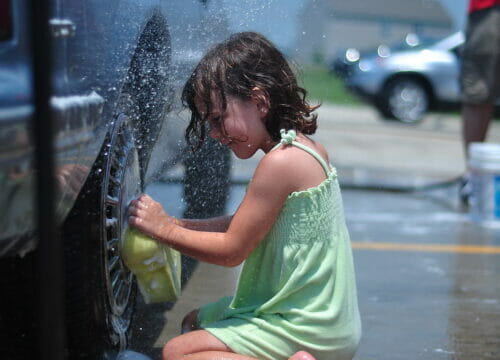
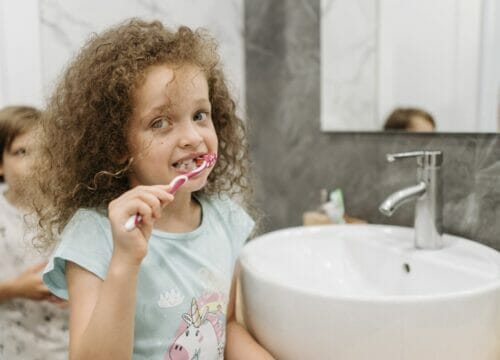
Breeding new crops that are less thirsty
Scientists are working on a way to create crops that need less water. They can do this by breeding new types of crops or by genetically modifying them. For example, they’ve created a genetically modified tobacco plant that doesn’t lose as much water, so it doesn’t need to use as much water from the soil. Scientists are optimistic that the same process could be applied to food crops like wheat, corn or soybeans.

More Crop Per Drop
When you water your plants with a hosepipe, a lot of the water evaporates and is lost. Now, your plant pots might be small but just imagine how much water is wasted if farmers do this to all their fields every single day!
Farmers are starting to use irrigation methods that work better and waste less water. One of the ways of doing this is by using drip irrigation.
Drip irrigation uses a tube with lots of little holes in it to deliver tiny drops of water to the base of a plant. These tubes can be set up to control the exact amount of water they should release, as well as when and where they should drip so that no water is wasted.
Unfortunately, drip irrigation still costs a lot to set up. Once it is set up though, the system tends to be less expensive to run than normal irrigation. So, to help farmers make this first step, governments can subsidise drip irrigation, so that it costs farmers a little less. Alternatively, it should be made easy for farmers to borrow money from the bank so that they can pay for the set-up costs.
2. Bring Clean Water To People and Communities That Need It
For as long as humans have been around, we’ve been working out ways to get hold of clean water, so some of these techniques are quite ancient and they need a bit of help from modern technology.
Wells
A well is a hole drilled in the ground that goes below the water table. Underground water is a very useful source of water because it is usually clean and safe, and, unlike seawater, it isn’t salty.
Wells have been used since the Neolithic era (7,000-10,000BC) and are so effective that they are still one of our first-choice water sources today. Instead of using buckets on ropes, which can be contaminated by mud and dirty hands, pumps are now used. Building a well is expensive – it costs a stonking £9,000 – so charities need your support to raise the funds!
Rainwater Harvesting
In a water-scarce area, you can’t let a drop go to waste. people harvest rainwater by collecting rainwater from roofs, roads, parks and open grounds and then storing it in a tank.
Rainwater is some of the cleanest water that nature offers us. Rainwater harvesting systems only cost about £200-300. This is much cheaper than building a well but the people that need them most, are often living in extreme poverty. This is why charities need your donations – a small donation can go such a long way to building a rainwater harvesting system that provides water for a family or community.
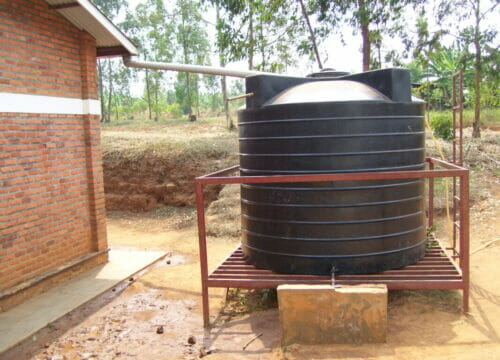
3. Make the water clean and safe to use
Scientists are developing technologies to clean our water and make it safe to use. Here are three examples:
Removing Plastics From Our Oceans: The Ocean Clean Up Barrier
The Ocean Clean Up Barrier is a long U-shaped barrier placed in the Pacific Ocean. It relies on the natural currents of the ocean to move plastic into the tip of the U-shape, where plastic can be stored. Once the system is full, the plastics are emptied onto a ship and brought to shore for recycling. The Ocean Clean Up Barrier expects to be able to remove an amazing 90% of floating ocean plastic by 2040!
Removing Germs From Our Sewage-Contaminated Waters: The Janicki Omniprocessor
The Janicki Omniprocessor turns sewer sludge into clean drinking water and ash that is free of germs. The great thing about the Janicki Omniprocessor is that it also produces electricity and safely gets rid of faeces. The first Janicki Omniprocessor was built in the African country of Senegal as a pilot project.
Removing Salt From SeaWater: Reverse Osmosis
Reverse osmosis is a process used to desalinate (remove salt from) water so that countries that have coastlines but no freshwater can produce clean drinking water. In this process, seawater is forced through a membrane at high pressure. The membrane allows water to pass through but traps everything else (including salt and bacteria). Reverse osmosis is the most efficient desalination process. It generates up to 4.5 times fewer greenhouse gas emissions than alternative processes.
Take action
Now that you understand a bit more about Clean Water and Sanitation, it’s time to make a difference. If you want to do something practical to help, the power is in your hands. Take a look at some ways you can take action right now.
Fundraise
- You can make a massive difference in somebody’s life by doing fundraising for charities that work to improve access to clean water. Some of the things the money you raise can achieve:
- £15 provides clean water for one child at school
- £30 could provide handwashing stations for 3 families
- £50 could help buy a set of tools to build the structures that filter sewage and clean it up before it enters rivers and streams.
- £60 covers the cost of an education session to help people understand the importance of using toilets
- £700 provides water and sanitation for a class
- £9,000 builds a well and changes a whole village forever, giving women hope, children health and the entire community a future!
- £15,000 builds a well and toilets for a school

- Limit your water consumption. Make a list of all the ways you use water throughout the day. You might like to consider the water footprint of some of the products you use here. To calculate your personal water footprint, you can use this water calculator.
- Have a think about whether you might be able to change any of your current routines to limit your water use. Click here for some ideas of what you could change.
- Have a shower instead of a bath.
- Turn the tap off when you are brushing your teeth.
- Wash your car using a bucket and sponge rather than a car wash.
- Limit your consumption of water-intensive foods. A starting point could be to avoid products made from cows since we know that they have a big water footprint. Try a cow’s milk alternative, such as oat or soya milk, or make mushroom burgers rather than beef burgers.
- Organise an assembly to give a speech to tell your school friends about the water crisis and how in many places in the world you cannot simply turn on a tap to get clean water. Give them some tips on what they can do to help. You could deliver the assembly yourself, or you could make use of charities offering free speakers and presentations. WaterAid has speakers that you can organise to come to your school for free. Or, The Thirst Project create virtual presentations for schools for free.
- Write to your MP to encourage them to make some noise about sewage pollution in UK waters.
- Write a letter to your headteacher to ask them to consider the water footprint of the foods they serve in the lunch hall. For example, you could ask them to make bolognese and lasagna with lentils instead of beef.
- Volunteer at a beach clean-up. And, if you can’t find a clean-up near you, rally as many people as you can together and organise your own! The Marine Conservation Society organise beach clean-ups all over the UK. Click here to see if there is one near you. This link will also give you advice on how to organise your own beach clean-up if you cannot find one near you. Use the App Litterati to geotag the rubbish that you collect so that companies can see which of their products end up in the seas.
- Make a poster for your school on the global water crisis. You might like to include some of the facts from this page about how not everyone has access to water. Then you could add some facts and numbers about how much water different things use up. And finally, you could list some tips for limiting personal water consumption.
- Tell your friends and family about the water crisis and what they can do to help. You could challenge them to some of the WaterAid games to make serious water conversations more fun!
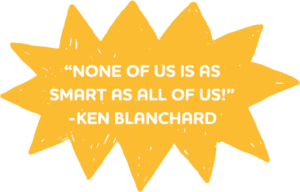
If you have any other ideas of SuperKind things people can do to help solve the global water crisis, we would love to hear from you here.
Support These Amazing Charities
WaterAid
WaterAid is working to make clean water and good hygiene accessible to everyone. Since 1981, WaterAid has reached 28 million people with clean water and 29 million people with toilets.
charity: water
charity: water’s mission is to bring clean water to everyone on the planet. Every penny funds projects & every project’s proved with GPS coordinates & photos. We can solve the ...
Change-Makers
Here are some amazing young people who cared about the water crisis and took action to make change happen. These change makers were all passionate about the same cause but used their unique skills to make change happen in different ways.
Everyone can help make a difference. Consider what your unique superpower might be. Are you someone with a strong voice who likes to spread awareness by talking to everyone you meet? Or do you prefer a behind the scenes approach – making sure that donations are collected to take to those in need?
Moksha Roy
The world’s youngest sustainability advocate – working to make the world a better place since she was 3 years old.
Lazar Duković
Designing technology to supply electricity and water without emitting greenhouse gases since he was 15 years old.
Autumn Peltier
Campaigning for access to clean water for Canada’s indigenous communities since she was 8 years old.
Gitanjali Rao
Solving the problem of water contamination using science and technology since she was 11 years old.
